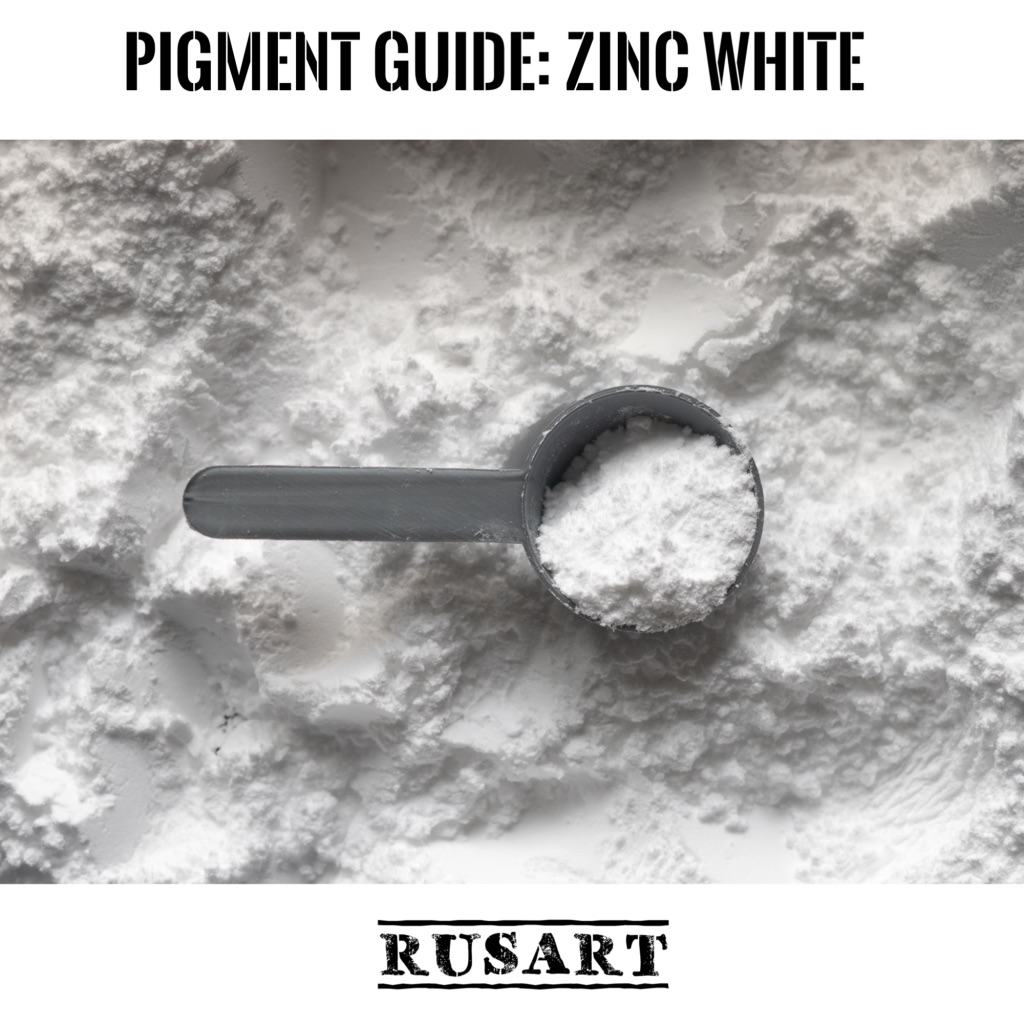Colour Index: PW4
Colour Constitution Number: CI 77947
Although Zinc white was known as a pigment since 1782 (more than hundred years before titanium white was discovered), it wasn’t widely used in oil painting until mid-19th century. There were many reasons for that.
First of all, zinc white is not as opaque as its predecessor lead white. Also, it has longer drying time than lead white as it absorbs 1.5 times more oil than lead white.
What is zinc white?
Technically, zinc white is zinc oxide (ZnO). As it’s insoluble in water zinc white is widely used in many industries, beyond paint-manufacturing:
- cosmetics
- food and supplements
- ointments
- batteries
- fire retardants
We are quite sure that you used since white beyond painting, like with baby rash creams or ointments, as well as in mineral sunscreens.
Common names for zinc white
As any other pigment, zinc oxide can be found under different names, and the most common of them is Chinese white. We use mostly Chinese zinc white in watercolour painting as white colour for highlights, and in mixes when we want to add some opacity or make flesh tones.
However, now we can see tendencies of using titanium white even for watercolours, because of lower costs as well as increasing volumes of titanium white manufacturing. Also, gum Arabic titanium white gouache provides better coverage and allows adding stronger white splashes and highlights in watercolour paintings.
Other names of zinc white include:
- Blanc de Zinc
- Chinese White
- Mixing White
- Permanent White
- Snow White
- Transparent Mixing White
Concerns of using zinc white
 There are 2 major concerns in using zinc white: environment safety and drawbacks using in oil.
There are 2 major concerns in using zinc white: environment safety and drawbacks using in oil.
Although zinc white is considered to be non-toxic, you should dispose products containing zinc oxide properly as when drained directly to waters or soils it can be toxic for aquatic eco-systems and environment.
What about using zinc white in oil, some studies show that using plain zinc white may lead to cracking of painting layer. However, if it’s used in mixes with most other pigments, cracking caused by zinc oxide is not proven. That’s one of the reasons why manufactures add zinc white into titanium white for their basic whites. Zinc white provides shorter drying time and smoother consistency, while titanium oxide brings opacity and permanence.
Zinc White Use
We’d suggest using zinc white for watercolour for flesh tones, but for stronger white lines we’d suggest using white from paper or titanium white gouache.
For oil – add some zinc white to achieve soft mixing effect in darker colours as well as for glazing as titanium white gives more haze and spreads less evenly in fine layers.
For acrylic we don’t see any benefits of using zinc white. As normally acrylic emulsion / dispersion takes less pigment than oil or watercolour, even titanium white is not opaque enough for many uses. So, zinc white is kind of expensive filler for acrylic.



























